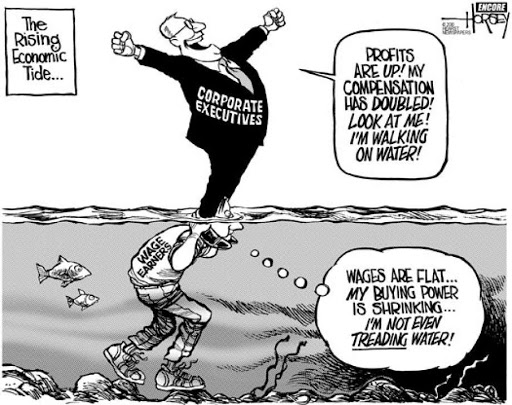Summary:
New issue of ROKE with papers by Stephen Marglin, Amit Bhaduri, Esteban Pérez (with your truly) among others. Last issue of the several in honor of the 25 years of the Marglin-Bhaduri papers on profit-led/wag-led growth. From the abstract of Marglin's paper: The central question this paper addresses is the same one I explored in my joint work with Amit Bhaduri 25 years ago: under what circumstances are high wages good for employment? I extend our 1990 argument in three directions. First, instead of mark-up pricing, I model labor and product markets separately. The labor supply to the capitalist sector of the economy is assumed à la Lewis to be unlimited. Consequently the wage cannot be determined endogenously but is fixed by an extended notion of subsistence based on Smith, Ricardo,
Topics:
Matias Vernengo considers the following as important: Bhaduri, Esteban Pérez, Marglin, Profit-led Models, Wage-led growth
This could be interesting, too:
New issue of ROKE with papers by Stephen Marglin, Amit Bhaduri, Esteban Pérez (with your truly) among others. Last issue of the several in honor of the 25 years of the Marglin-Bhaduri papers on profit-led/wag-led growth. From the abstract of Marglin's paper: The central question this paper addresses is the same one I explored in my joint work with Amit Bhaduri 25 years ago: under what circumstances are high wages good for employment? I extend our 1990 argument in three directions. First, instead of mark-up pricing, I model labor and product markets separately. The labor supply to the capitalist sector of the economy is assumed à la Lewis to be unlimited. Consequently the wage cannot be determined endogenously but is fixed by an extended notion of subsistence based on Smith, Ricardo,
Topics:
Matias Vernengo considers the following as important: Bhaduri, Esteban Pérez, Marglin, Profit-led Models, Wage-led growth
This could be interesting, too:
Matias Vernengo writes Esteban Pérez Caldentey on the Ideas of Raúl Prebisch
Matias Vernengo writes Dollar Hegemony and Argentina
Matias Vernengo writes Dollar Hegemony, coming soon
Matias Vernengo writes The New IMF and the Covid Crisis
The central question this paper addresses is the same one I explored in my joint work with Amit Bhaduri 25 years ago: under what circumstances are high wages good for employment? I extend our 1990 argument in three directions. First, instead of mark-up pricing, I model labor and product markets separately. The labor supply to the capitalist sector of the economy is assumed à la Lewis to be unlimited. Consequently the wage cannot be determined endogenously but is fixed by an extended notion of subsistence based on Smith, Ricardo, and Marx. For tractability the product market is assumed to be perfectly competitive. The second innovation is to show how disequilibrium adjustment resolves the overdetermination inherent in the model. There are three equations – aggregate demand, goods supply, and labor supply – but two unknowns – the labor–capital ratio and the real price (the inverse of the real wage). Consequently equilibrium does not even exist until we define the adjustment process. The third innovation is to distinguish capital deepening from capital widening. This is important because, ceteris paribus, wage-led growth is more likely to stimulate the economy the greater the fraction of investment devoted to capital deepening. A final section of the paper shows that US data on employment and inflation since the 1950s are consistent with the theory developed in this paper.Marglin's paper is open, and so is Bhaduri's. Full issue here.

